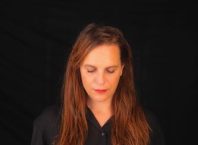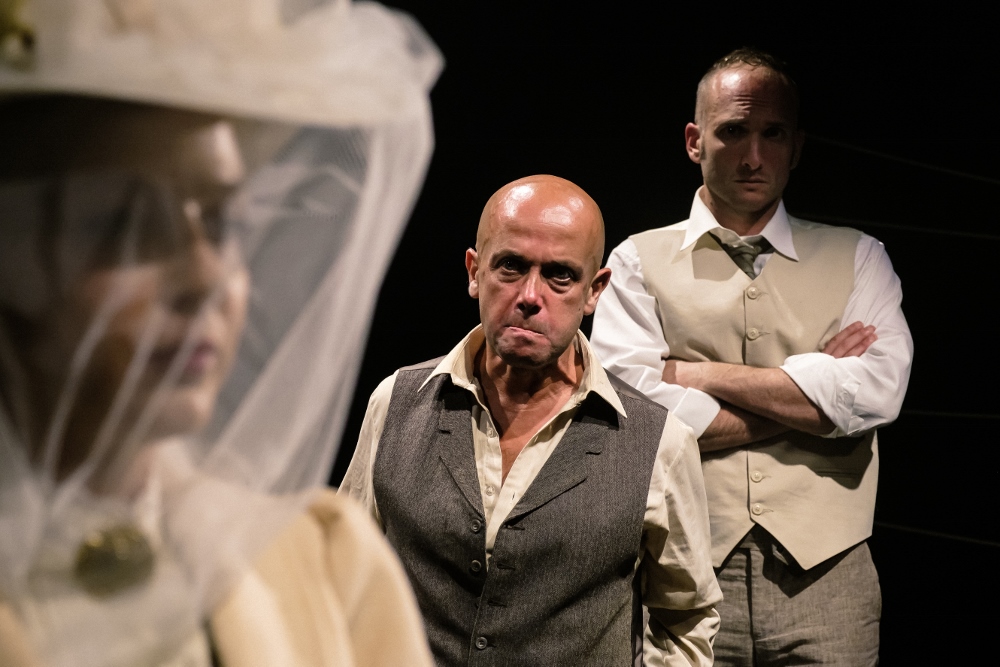
Malenki Theatre’s adaptation of Stefan Zweig’s novella Amok, is an intense and harrowingly beautiful theatrical experience, a journey into the mysterious depths of the human spirit. The artistry of the entire creative team is breathtaking, transporting the viewer so utterly into an imaginative realm that one feels like a silent participant in the drama. Adapted and directed by Michael Teplitsky, and translated into Hebrew by Roy Chen, the play is performed in the Malenki Theatre’s new home on Homa UMigdal Street in Tel Aviv, a small gem of a theatre that has been designed to take advantage of its tight dimensions, with meticulous attention to detail, evoking the sense of entering a hallowed space, where one expects to encounter the unexpected.
The story of a doctor whose life takes a dramatic turn is recounted in Zweig’s novella through a framing narrative, as the narrator encounters the man on the deck of a ship bound for Europe. The current production adds another, enigmatic, layer to this frame, with brief, selects scenes in which the narrator (Ori Levanon) is in conversation with a woman (Anna Dubrovitsky), providing not only a framework in which he can tell of his meeting with the doctor, but also a way to connect the “amok” of the story to present-day concerns.
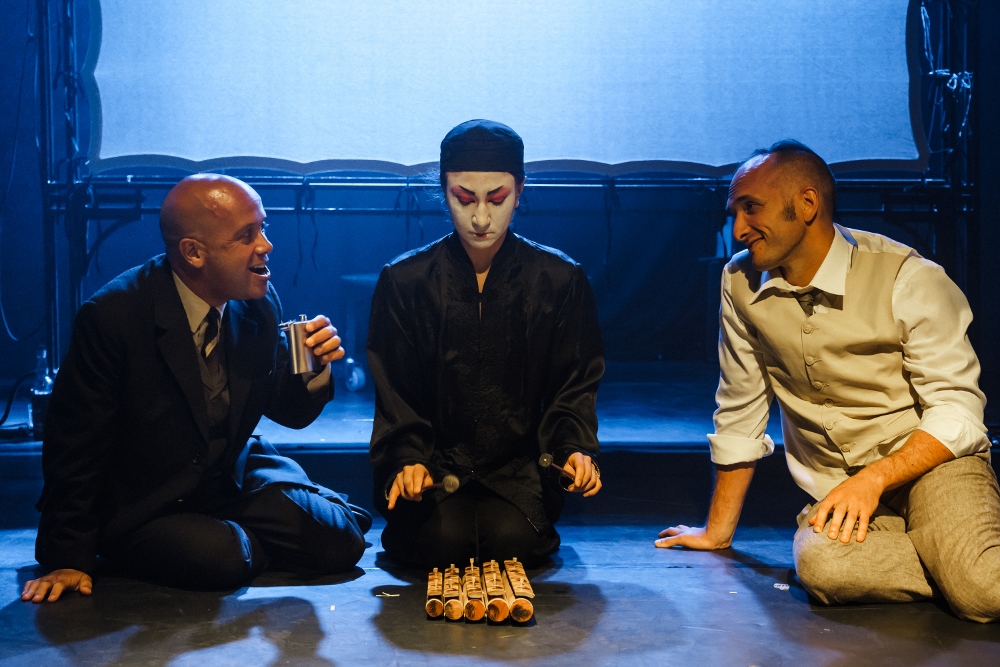
The theatre itself is a tiny black box, into which the audience is ushered by a bell, and an attendant (Kseniya Moroz) attired in Asian garb, with traditional Asian stage makeup: her face painted white with the area around the eyes shaded red. Set designer Polina Adamov evokes the feeling of a ship’s deck with ropes on either end of the stage, a large hanging bell, and wooden percussion instruments hanging from ropes on one side of the stage – all complemented by the movement of the actors choreographed by Lena Rosenberg, and lighting effects by Misha Tcherniavsky and Inna Malkin – sound, sight, and movement working together to create an immersive effect.
The story is set in 1912, on a ship bound for Europe from Malaysia. The word “amok”, and the phenomenon, is derived from a Malaysian word, and describes an uncontrollable, usually violent, frenzy. The extreme and almost unbearable aspects of the doctor’s story are tempered by the artistic means that situate the tale in Asia, with music (Evgeny Levitas) and Shadow Puppet Theatre – wayang kulit (Kseniya Moroz) – throughout the play. As viewed through contemporary eyes, the contrast between the beauty of Asian arts, and the doctor’s attitude towards life in Malaysia and its people, suggests an indictment of colonialism, among the play’s other themes.
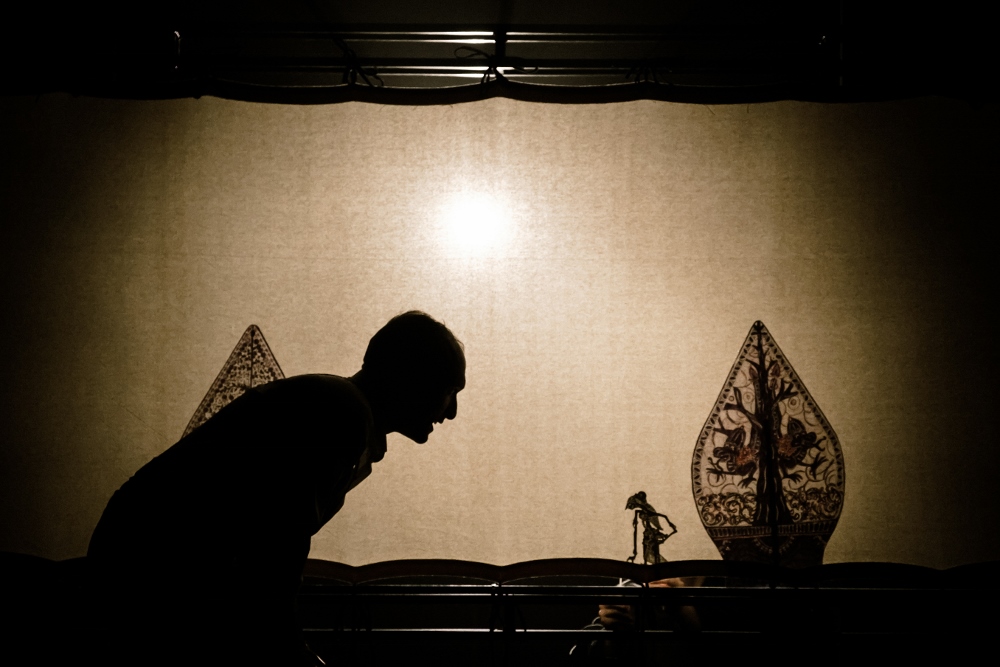
Ori Levanon portrays the unnamed narrator (as well as brief appearances as other, minor, characters), whose curiosity about the doctor might be said to mirror that of the audience. The physicality of his performance is captivating, whether he evokes the claustrophobic feel of a cramped cabin, the sway of the ship on the waves, or more nuanced, intimate moments when his eyes reflect a deep and sudden sorrow. Anna Dubrovitsky portrays the woman whose fateful encounter with the doctor is at the heart of the play. Her bearing, augmented by Yehudit Aharon’s elegant costuming in shades of cream and white, generates the image of a strong, proud, and intelligent woman, intent on coping with a difficult situation. Almost literally walking a tightrope, Dubrovitsky embodies the inner struggle of a woman who is utterly alone and full of fear, yet knows that she must keep those feelings hidden, summoning all her courage to traverse the treacherous abyss that looms beneath her. In 1912 Malaysia, this means preserving a façade, and as she walks through a ballroom, instructing herself to smile, Dubrovitsky’s depiction of the woman’s resilience and vulnerability is heart-rending.
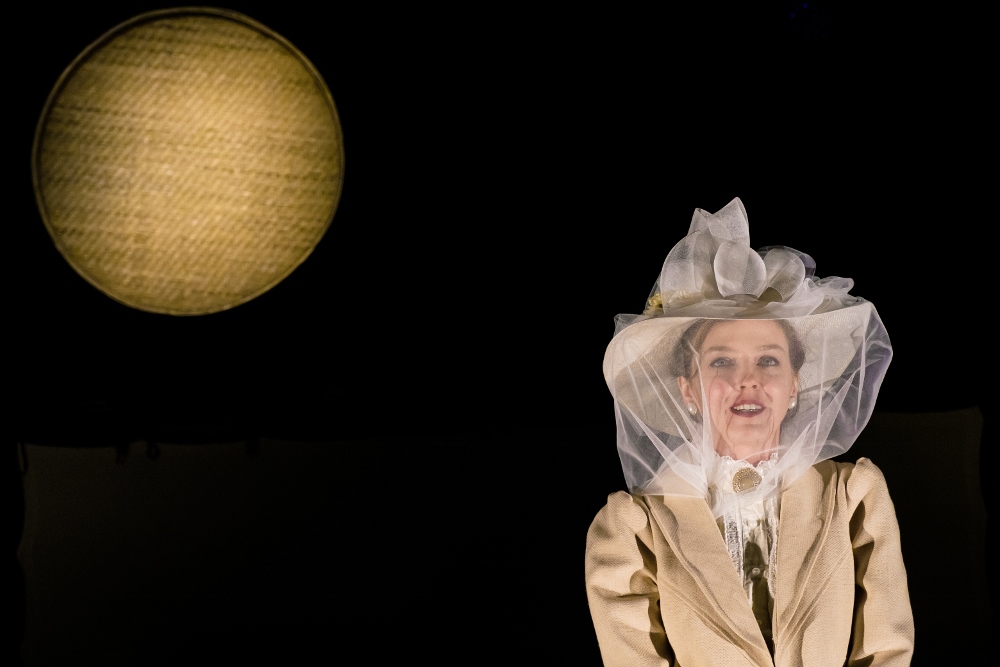
The doctor too remains unnamed, distinguished only by his professional title of “doctor” – and this is telling. For in this play that raises critical moral questions, the central one regards one’s duty to help others, and the extent of that responsibility. Dudu Niv’s performance as the doctor is a tour de force. He portrays the doctor with tantalizing eloquence, evoking the image of a man of considerable talents, brought down by his weakness to a kind of exile in Malaysia, unable to find his place in an unfamiliar environment and culture, succumbing to isolation. Conveying a sense of self-pity mingled with self-loathing, the doctor is by turns charming and frightening as he tells his tale, a man teetering on the verge of collapse, yet somehow still in control of his narrative. The image generated is not one of a man I would admire, on the contrary. As the doctor plunges further into the depths of his story, his response to the woman is horrific, all the more so because Niv embodies the character so intensely, that one feels the doctor’s urges and emotions, vile though they may be. Overcome by his urges, he appears monstrous.
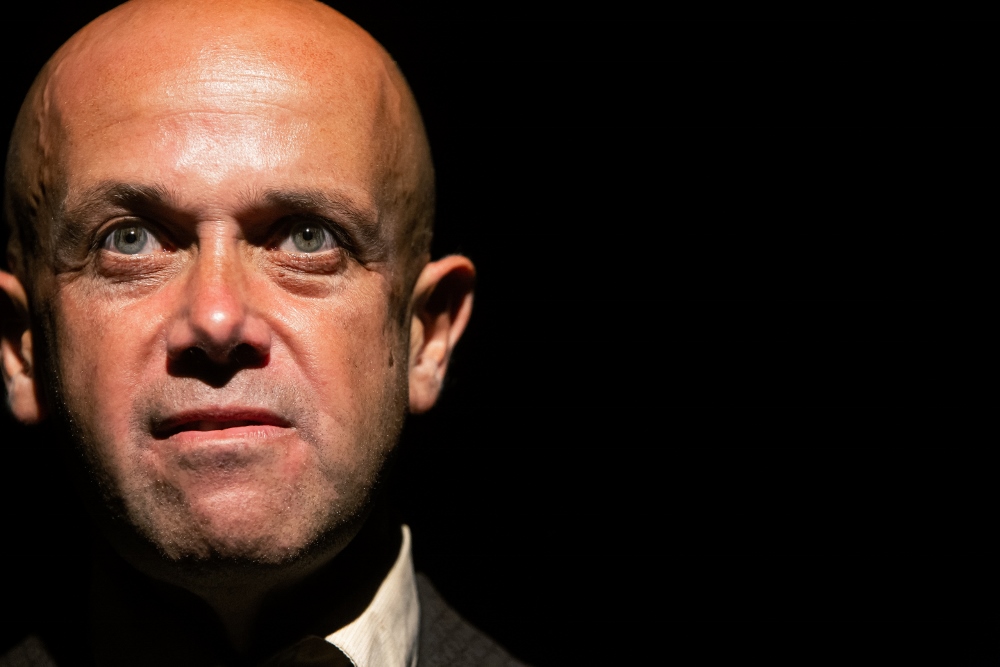
Yet the power of Niv’s performance is not in the anger and loathing he evokes in the viewer, but in the empathy he elicits for the doctor. As I listened, I saw a man whose eyes reflected an endless abyss of loss, whose body had been emptied of all life-force, tormented by the knowledge of his own culpability. It was impossible to listen and remain untouched by this narrative. Like the nameless narrator, the viewer is implicated by listening to the story, inevitably touched and affected by it; there are no innocent bystanders.
Amok by Stefan Zweig
Translation to Hebrew by Roy Chen; Adapted and directed by Michael Teplitsky; Music: Evgeny Levitas; Set design: Polina Adamov; Costume design: Yehudit Aharon; Choreography: Lena Rosenberg; Lighting design: Misha Tcherniavsky and Ina Malkin; Shadow Puppet Theatre: Kseniya Moroz; Assistant director: Yasmin Bar Shalom Agmon; Cast: Dudu Niv, Anna Dubrovitsky, Ori Levanon, Kseniya Moroz

